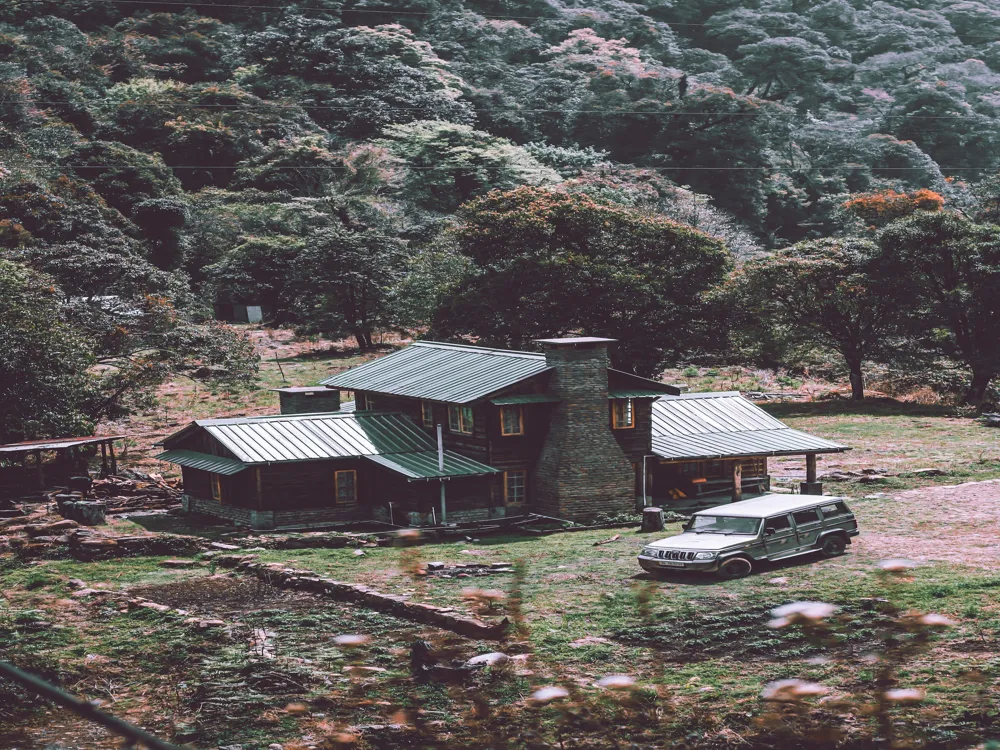Nestled in the vibrant and culturally rich landscape of Jorhat, Assam, the Hatibaruah Namghar stands as a testament to the region's deep spiritual and historical heritage. This revered place of worship, integral to the Assamese Vaishnavite community, is not just a religious site but also a hub of cultural and social activities. The Namghar, which literally translates to 'prayer hall', is a focal point for community gatherings, religious discourses, and the celebration of festivals. The history of Hatibaruah Namghar traces back to centuries, deeply intertwined with the advent of Vaishnavism in Assam. Founded by the saint-reformer Srimanta Sankardeva, Vaishnavism in Assam is characterized by its emphasis on devotion to Lord Vishnu and a strict code of conduct that shuns caste discrimination and animal sacrifice. The Namghar, as a concept, emerged as a central place for disciples to congregate, sing devotional songs (Borgeets), and participate in community prayer (Nama Prasanga). Over the years, Hatibaruah Namghar has evolved from a simple prayer hall to a complex structure that serves multiple purposes. It has become a center for learning about Assamese culture, language, and traditions. The Namghar plays a crucial role during festivals like Bihu, Raas Leela, and Janmashtami, showcasing the rich tapestry of Assamese culture. Its significance extends beyond the religious realm, making it a beacon of Assamese identity and pride. The architecture of Hatibaruah Namghar is a splendid example of the unique style that characterizes Assamese religious structures. Reflecting the intricate craftsmanship and artistic heritage of the region, the Namghar's design is both aesthetically pleasing and symbolically significant. Its structure is a harmonious blend of indigenous architectural styles and influences from the Ahom period. The main prayer hall, the sanctum of the Namghar, is architecturally significant. The roof, typically a 'Kutchha' or thatched style in earlier times, has now evolved into a more durable structure while retaining its traditional design elements. The façade of the Namghar is decorated with ornate carvings and motifs that reflect the rich cultural ethos of Assam. These carvings often depict scenes from Hindu mythology, particularly from the life of Lord Krishna, resonating with the Vaishnavite beliefs. One of the most striking features of Hatibaruah Namghar's architecture is its use of wood and bamboo, materials that are abundantly available in Assam. The skillful use of these materials not only gives the structure an organic feel but also exemplifies the sustainable architectural practices of the region. The interior of the Namghar is equally mesmerizing, with its walls adorned with colorful paintings and scriptures, creating a serene and contemplative environment. The compound of the Namghar often includes auxiliary structures such as the 'Monikut' (shrine), 'Naamghar' (community hall), and 'Bhajghar' (residence for the monks and devotees). These structures are designed in harmony with the main Namghar, creating a cohesive and spiritually uplifting landscape. When visiting Hatibaruah Namghar, it's important to dress modestly out of respect for the religious nature of the site. Traditional Indian attire is preferred, but not mandatory. Avoid wearing shorts, sleeveless tops, or any revealing clothing. Visitors should be mindful of local customs and traditions. It's recommended to remove shoes before entering the prayer hall and to participate or observe the rituals quietly and respectfully. Photography may be restricted in certain areas, so it's advisable to ask for permission before taking pictures. Engaging in community activities like prayer sessions and cultural programs can enrich your experience. Visitors are often welcomed to join in these activities, offering a unique insight into Assamese culture and Vaishnavite practices. The area around Hatibaruah Namghar is rich in cultural and natural beauty. Take time to explore the surroundings, including local markets and nearby tea gardens, to get a holistic experience of Jorhat's heritage. Hatibaruah Namghar, located in Jorhat, Assam, is accessible by various means of transportation. The nearest airport is Jorhat Airport, which is well-connected to major cities in India. From the airport, taxis and local buses are available to reach the Namghar. For those preferring rail travel, Jorhat has a railway station with good connectivity. Local transport like auto-rickshaws and taxis can be hired from the railway station to reach the Namghar. Additionally, Jorhat is well-connected by road, and visitors can opt for long-distance buses or drive to the city. Read More:Overview of Hatibaruah Namghar in Jorhat, Assam
Architecture of Hatibaruah Namghar
Tips When Visiting Hatibaruah Namghar
Dress Appropriately
Observe Local Customs
Participate in Community Activities
Explore the Surroundings
How To Reach Hatibaruah Namghar
Hatibaruah Namghar
Jorhat
Assam
₹ 6,000 onwards
View jorhat Packages
Weather :
Tags : Temple
Timings : 6:00 AM to 8:00 PM
Time Required : 1-2 hours
Entry Fee : Free
Planning a Trip? Ask Your Question
Jorhat Travel Packages
View All Packages For Jorhat
Top Hotel Collections for Jorhat

Private Pool

Luxury Hotels

5-Star Hotels

Pet Friendly
Top Hotels Near Jorhat
Other Top Ranking Places In Jorhat
View All Places To Visit In jorhat
View jorhat Packages
Weather :
Tags : Temple
Timings : 6:00 AM to 8:00 PM
Time Required : 1-2 hours
Entry Fee : Free
Planning a Trip? Ask Your Question
Jorhat Travel Packages
View All Packages For Jorhat
Top Hotel Collections for Jorhat

Private Pool

Luxury Hotels

5-Star Hotels

Pet Friendly






















